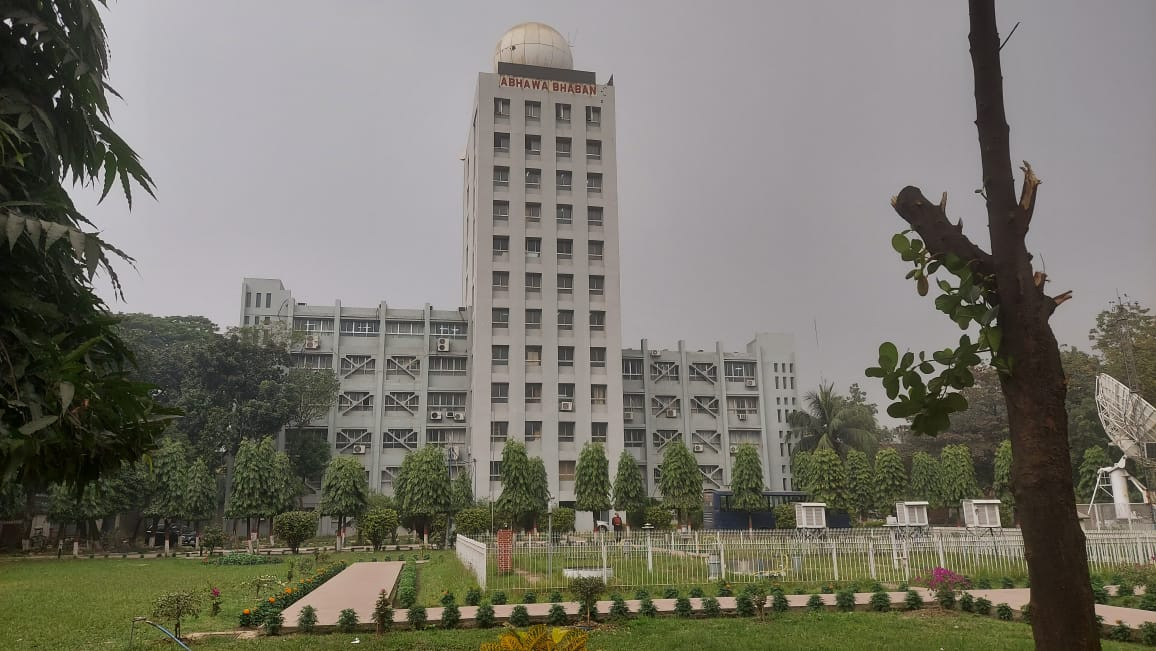Northeastern, central parts of Bangladesh may witness heavy rainfall: BMD
The BMD official says the country witnessed the longest duration of the heatwave for the past 28 days since April 1
BSS, Dhaka
Published: 30 Apr 2024

Photo: ANM Mohibub Uz Zaman
The Met Office today forecasted "heavy rainfall" at the beginning of the first week of the next month at a time when the entire country braced for more extreme heat as Bangladesh has witnessed the longest spell of heatwave setting up a record.
"Northeastern, central parts including Sylhet division and some parts of Mymensingh and Dhaka division are likely to experience heavy to very heavy rainfall between 2 and 7 May," Dr Abul Kalam Mallik, meteorologist of Bangladesh Meteorological Department (BMD) told BSS today.
Analysing the mathematical model of weather phenomenon, he said that northeastern and central parts of the country are going to witness the much-awaited rain and expecting some relief from a sweltering heatwave.
Large swaths of Khulna and Rajshahi division are sweltering through a heatwave as the Met office logged the highest temperature above 40 degrees Celsius in most stations located in the two divisions since April 1, Mallik said predicting there is very little chance of rainfall in the south-western and north-western regions during the early May.
The meteorologist attributed uncomfortable feelings of unbearable hot weather to high humidity persisting in the air during the afternoon and evening period suggesting avoiding movement between 12 noon to 4pm as the sunlight is getting too hot as it (the Sun) provides sunlight vertically with intense heat.
"Normally we record temperature from the air," Mallik said the highest temperature was found between 12 noon and 4 pm because of the vertical position of the Sun.
Analyzing humidity indexes, Mallik continued, "There is a close relation of temperature and humidity . . . discomfort feelings will increase if high humidity persists in the air with high temperature. "Although temperature decreases after 4 pm, we feel very hot weather due to high humidity," he added.
The Met Office recorded 43.8 degrees Celsius at Jashore, the highest temperature of the current year while the temperature in Dhaka was recorded at 37.4 degrees Celsius but the high humidity has exposed the residents to massive discomfort.
The BMD official said the country witnessed the longest duration of the heatwave for the past 28 days since April 1 and the Met Office warned the phenomenon would continue throughout the next month.
"But unlike the previous heatwaves, this year it spread all over the country," commented meteorologist Abul Kalam Mollik, who was supported by Zebunnesa as well.
Visibly for the first time, the meteorologists acknowledged that the climate change phenomenon caused the erratic weather pattern with gradually expanding areas of heatwave, joining the voice of the climate experts and activists.
According to the weather bulletin of BMD issued here today, a very severe heat wave is sweeping over the districts of Jashore, Chuadanga, Pabna & Rajshahi and the severe heat wave is sweeping over Dhaka division and the rest part of the Khulna & Rajshahi divisions.
A mild to moderate heat wave is sweeping over Barishal, Rangpur & Chattogram divisions and the district of Mymensingh and it may continue, the bulletin added.
They said the heatwave also affected most parts of South Asia and partly East Asia with countries like India, Bangladesh, Pakistan, Afghanistan, Thailand the Philippines and Vietnam.
April is typically hot in Bangladesh as it is in other South and Southeast Asian countries, but according to meteorologists, temperatures this month have been unusually high which was highlighted by international media outlets as well.
According to the New York Times, hundreds of millions of people in South and Southeast Asia were suffering from a gruelling heatwave that has forced schools to close, disrupted agriculture, and raised the risk of heat strokes and other health complications.
The recent report also acknowledged the Bangladesh scenario saying temperature in some areas soared above 42 degrees Celsius but the "numbers don't quite capture how extreme humidity makes the heat feel even worse".
Schools across the country were closed due to the extreme weather but students are also struggling to do anything at home.
The heatwave has forced healthcare facilities to take emergency measures to provide medical services with a higher number of patients reporting to hospitals with heat-related ailments since the beginning of April while the children and elderly people appeared as the most vulnerable during this prolonged hot weather.
"Large numbers of people are becoming ill with heatstroke, dehydration, exhaustion and breathing problems and they are suffering from other heat-related diseases as well," Director of Mugda Medical College and Hospital Dr Md Niatuzzaman told BSS.
The other hospitals and healthcare facilities including Shishu Hospital, Shaheed Suhrawardy Medical College Hospital and International Centre for Diarrheal Disease Research, Bangladesh (ICDDR, B) reported identical scenarios.
"Nearly, 500 diarrhoea patients have been admitted to the International Centre for Diarrheal Disease Research, Bangladesh (ICDDR, B). A significant number of patients are getting admission to ICDDRB daily," ICDDR'B spokesman AKM Tariful Islam Khan told BSS two days ago.
The health ministry issued a directive to take extra measures to face the crisis in hospitals nationwide.
Doctors suggested people stay indoors as much as possible and wear weather-suitable clothes during exposure to the sun to protect themselves from heatstroke and rest after one or two hours during the working period alongside consuming more liquid food besides water to avoid dehydration during the heatwave.
"Our brains can tolerate a certain level of temperature, if it exceeds people may faint, suffer heatstroke besides suffering from dehydration causing electrolyte imbalance and other complications including kidney dysfunction," former Suhrawardy Hospital director Professor Dr Khalilur Rahman said.

